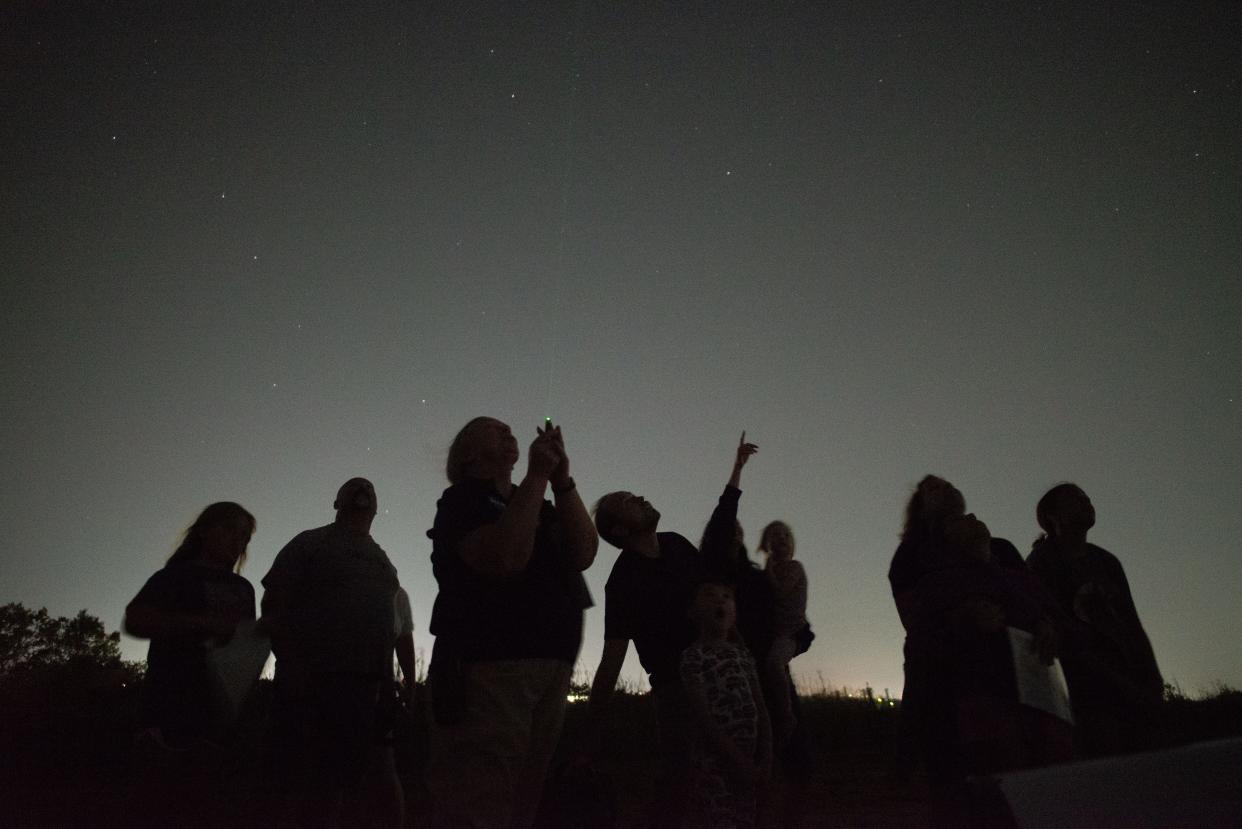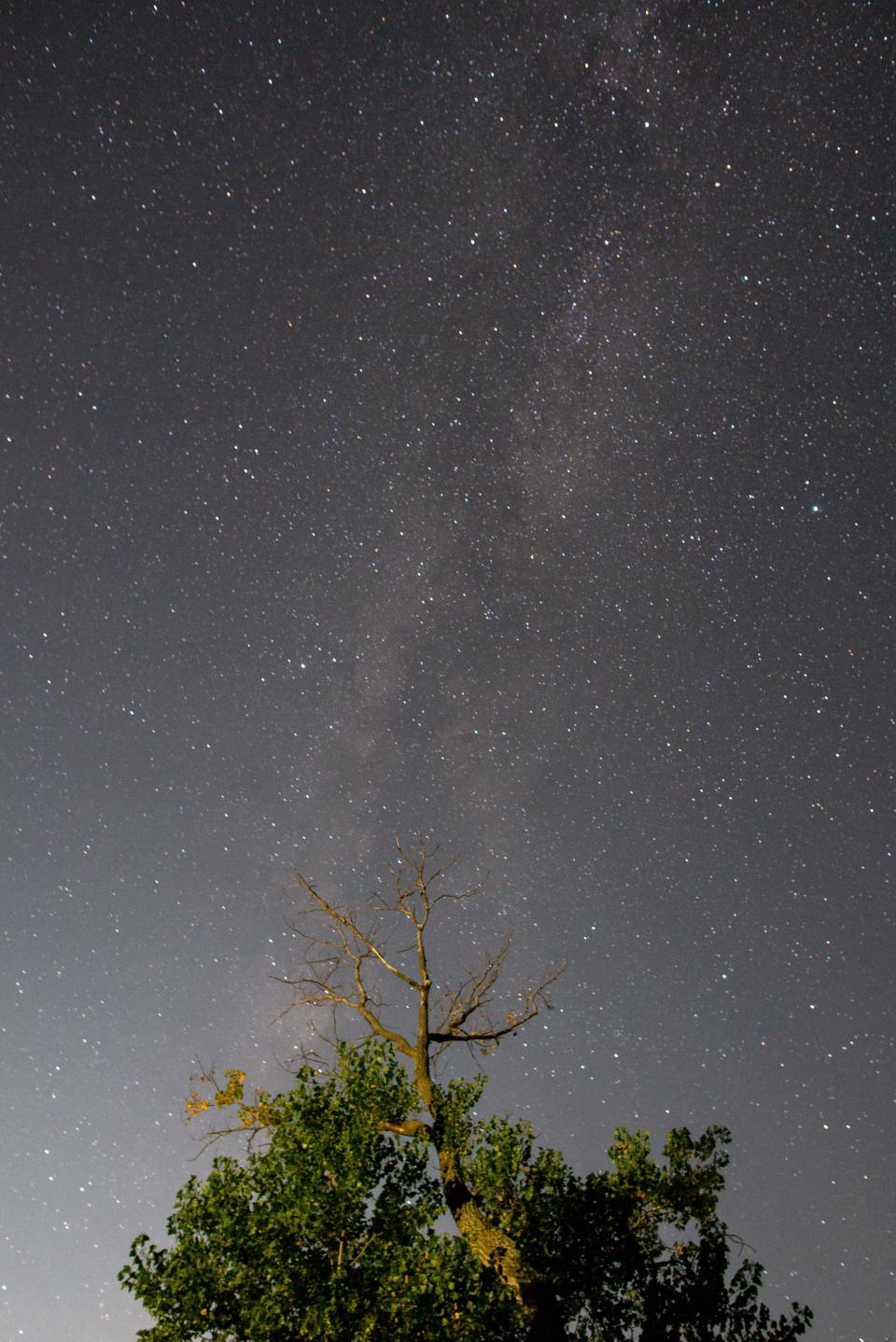Want to best view mysteries of the universe? Get high (to the sky) and away from city lights.

After the sun sets over the horizon, the first twinkles in the night sky can already begin to appear — if you're in the right place.
For a small group of stargazers, that place was the highest point in Topeka: Burnett's Mound.
At about 9:30 p.m. Aug. 26, Shawnee County residents wanting to take a closer look at the night sky had the chance to do so. Shawnee County Parks and Recreation teamed up with Brenda Culbertson, an ambassador for NASA Jet Propulsion Laboratory Solar System, for the "Ring In Saturn" viewing event.
More: Eastern Kansas will see dangerously high temperatures by 2053, new climate study predicts
Culbertson and her husband, Mike Calderwood, brought a variety of telescopes to show anyone wandering up the path what a magnified view of the planets look like and give information along the way.
"You can tell a star from a planet by looking at it because stars twinkle. Planets don't," Culbertson said.
On this particular night, the amateur astronomers got a glimpse of Saturn's rings, Jupiter and learned about a few constellations.
More: These are Kansas' top five public and private golf courses, as ranked by Golfweek
Here's how to get the best view of the nighttime sky

Although it's possible to see planets, certain constellations and the moon through the city lights, Culbertson said the best places to go are where it's really dark, such as Shawnee State Fishing Lake in the northern part of the county.
"It's dark enough where you can see much more than what you can see around here," she said. "Where I live, we have the Milky Way every clear moonless night. It's great.
"You don't see that here. Milky Way is right over our heads. We can't see it."
One doesn't need equipment to go stargazing. Many phenomena — like shooting stars or meteor showers — are best seen from the naked eye.
Catherine Hilderbrandt, 9, said she tries to watch all the meteor showers with her mother, Jennifer. They joined the Burnett's Mound group.
"I think what stargazing interested me. It's above the earth and it's a mystery, and that's probably what most makes me inspired," Catherine said.
More: Here's when Topeka Zoo giraffes will walk to new exhibit
Here are some Topeka-area astronomy groups

Astronomers are naturally curious people, which makes connecting and asking them questions fairly easy.
The area has astronomy clubs to join, and the county will host future events as well.
Topeka's Northeast Kansas Amateur Astronomers' League Inc. and Astronomy Associates of Lawrence are part of NASA's Night Sky Network. St. Marys has Kansas Astronomical Observers.
Culbertson said she and the county will likely be hosting a similar event for International Observe The Moon Day on Oct. 1.
Evert Nelson can be reached at enelson@cjonline.com or 785-231-9565.
This article originally appeared on Topeka Capital-Journal: Topeka residents learn how to view the night sky during viewing event

